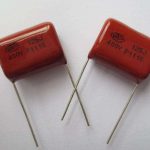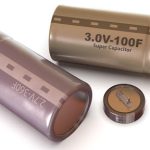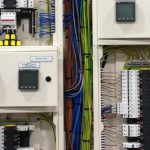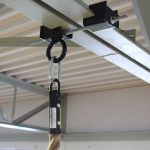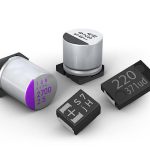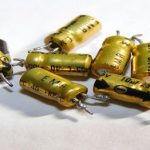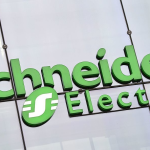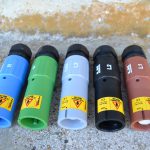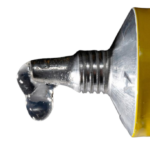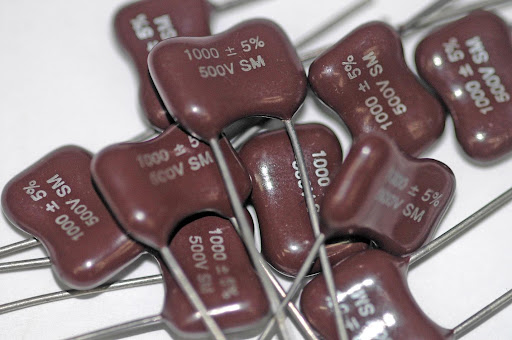
Mica capacitors are the type of capacitors in which mica is used as the dielectric material in rocks, granites, etc. This material plays a main part in electrical applications like electrical insulators. These components are stable, reliable, and high precision, provided in various ranges like low to high voltage, and the mic capacitor capacitance ranges from 20 pF – to 10 µF. Mica capacitors are also effective for applications where low capacitance and high accuracy changes over time are required. These capacitor perform efficiently at high frequencies.
The mica material used as dielectric restricts the flow of current, which allows it to be used as trimmer capacitor. The dielectric materials used in such capacitor are white mica, amber mica, rose mica, and ruby. Among these materials, muscovite mica material is mostly used as the dielectric material in mica capacitor.
Construction of Mica Capacitors
Mica Capacitors are made of metal-coated mica sheets on both sides, one over another. The manufacturer then covers this construction with epoxy to protect them from environmental factors. The minerals of mica are mechanically, chemically, and electrically stable because of the binding of the exact standard crystalline layered structure. The thin sheets are manufactured within diameters of 025mm to 0.125 mm.
The materials of mica most commonly used are muscovite and phlogopite mica. Phlogopite mica is good at temperature resistance, whereas muscovite is known for its good electrical properties. Dielectric material like mica is used widely in South America, India, and Central Africa. Moreover, n the composition stage of raw materials, the higher the difference, the higher the charge required for categorization and examination. Finally, mica dielectric material does not easily respond to most acids, soil, oil, and water.
Types of Mica Capacitors
Mica capacitors are divided into two major types that are:
- Stacked Mica Capacitors
- Silvered Mica Capacitors
Stacked Mica Capacitors
These Capacitors are designed with mica sheets layered upon each other. Every layer of the mica sheet can be divided by a thin metal sheet of copper or aluminum. However, this structure can be enclosed in a plastic casing to protect it from moisture or any mechanical harm.
Both terminals of the capacitor are connected at every end of the capacitor. There is the capability to arrange the mica sheets between the metal sheets that function as a dielectric material. The aluminum or copper acts as the electrodes, and the material restricts current flow.
Silvered Mica Capacitors
The Silvered Mica Capacitors are constructed by coating any side of the mica sheets with silver by using a screening method. Moreover, in this capacitor, you can achieve the required capacitor with the help of different mica sheets coated with silver. These sheets stacked one over the other. The silver coating applied on top of the sheet functions like electrodes, whereas the mica sheets function as a dielectric.
Silvered mica capacitor have great properties like temperature coefficient, high accuracy rate, low capacitance difference through the voltage, etc. Moreover, these capacitors utilized in the coupling, decoupling, and Radio Frequency oscillators.
Advantages and Disadvantages
Advantages
- Some of the advantages of mica capacitor include:
- High accuracy
- Stable capacitance
- Capable of operating at high temperatures
- Resistant to extremely high voltages
- Fewer losses
- Good insulation provided by the dielectric material
Disadvantage
Even though mica capacitor have a high tolerance and low-temperature coefficient, we can notice fluctuations in frequency on certain occasions. When this occurs, it can result in the filter altering its properties or the oscillator fluctuating in frequency. There are not many identified disadvantages of mica capacitor, but the two common ones are:
- They are costly
- There is no appropriate sealing for mica capacitors
Applications of Mica Capacitors
- Some of the common applications of mica capacitor include the following:
- They utilized in radio frequency circuits where stability is crucial.
- Such capacitors are effectively used in tuned circuits with high frequencies similar to oscillators and filters. They are also found being used in snubbers.
- They are also widely utilized in high voltage applications like Radio Frequency Transmitters.
- Mica Capacitor are utilized in resonance circuits, coupling circuits, LASER, RADAR, space, etc.
Conclusion
In conclusion, as explained above, Mica Capacitors are among the most stable, dependable, and high accuracy capacitors among the many types of capacitors available in the market. Secondly, they have used effectively in the electrical industry for many years. You will find them in various voltages and from low to high. They used in applications that require high precision and low capacitance variation over time. Such capacitors have the potential to operate at higher frequencies. Finally, they are among the best types of capacitors with many such advantages and fewer disadvantages.






